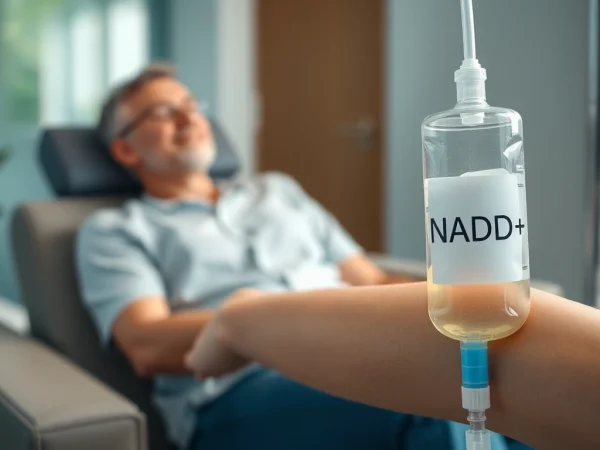Understanding the Challenges of the VDAP Program for Alabama Nurses
Introduction to the VDAP Program
The VDAP Program, or Voluntary Disciplinary Alternative Program, represents a critical shift in addressing the challenges faced by nurses experiencing substance use issues or mental health problems in Alabama. This legislative initiative aims to provide a supportive pathway for nurses to seek help without the crippling consequences of disciplinary action. However, as beneficial as it may seem, the program is not without its complications and challenges that require careful navigation.
What is the VDAP Program?
The VDAP Program is a state-sanctioned initiative designed to encourage nurses to recognize their struggles with substance use or mental health issues and seek assistance voluntarily. By participating, nurses can engage in a rehabilitative process instead of facing immediate disciplinary actions that could jeopardize their professional licenses. The core philosophy behind VDAP is grounded in the understanding that recovery is more achievable when individuals are willing to admit their struggles and commit to a treatment plan.
The program offers a structured approach to treatment and rehabilitation, often involving therapy, monitoring, and sometimes education on substance use disorders. Nurses who successfully complete the program may have the opportunity to maintain their licensure and continue their careers, provided they adhere to the program’s requirements.
Eligibility and Application Process
The eligibility criteria for the VDAP Program are primarily aimed at licensed nurses in Alabama who are grappling with substance use disorders or mental health challenges. To qualify, nurses must voluntarily initiate their entry into the program. This stipulation is crucial, as the VDAP Program functions best when participants genuinely want to seek recovery rather than coerced into the process.
The application process typically involves a comprehensive assessment by the Alabama Board of Nursing. Interested nurses are required to submit an application form, which may necessitate providing background information and detailing their substance use or mental health history. Participation often requires a commitment to follow a tailored treatment plan, regular monitoring, and attendance in support groups.
Goals and Objectives of the VDAP Program
The primary objective of the VDAP Program is to facilitate early intervention that can lead to sustainable recovery pathways for nurses. By promoting a culture of openness and support, VDAP aims to eradicate the stigma associated with mental health and substance use disorders. It is rooted in the belief that nurses should not be penalized for seeking help and that early intervention can significantly enhance their chances of recovery.
Moreover, the program aspires to maintain a steady workforce of healthy nurses who can deliver high-quality care to patients. By addressing issues before they escalate to disciplinary action, the VDAP Program helps preserve professional integrity and accountability within the nursing community.
Common Challenges Faced by Participants
Stigmas Associated with Participation
Despite its positive intentions, the VDAP Program is often clouded by stigma. Many nurses fear that peers, employers, or patients will view their participation negatively, leading them to remain silent about their struggles. This perception can create barriers to entry, as potential participants may choose not to seek help due to fears of being labeled or ostracized.
Overcoming these stigmas requires concerted efforts from the healthcare community to create an environment where seeking help is normalized. Education and awareness campaigns can help shift perceptions, reinforcing that seeking treatment should be viewed as a sign of strength rather than weakness.
Misconceptions about the VDAP Program
Misconceptions about the VDAP Program can complicate the enrollment process and discourage participation. One prevalent misconception is that the program is merely a cover-up for disciplinary actions. Many nurses mistakenly believe that entering the program will automatically lead to a loss of their nursing licenses or career opportunities.
In contrast, the reality is that the VDAP aims to support recovery by providing nurses a chance to rehabilitate without immediate disciplinary repercussions. Clarifying these misconceptions through educational resources can significantly improve participation rates and foster a supportive community where nurses feel safe to disclose their challenges.
Impact on Professional Licensure
Participation in the VDAP Program can have profound implications for a nurse’s licensure status. While the program is designed to help nurses retain their licenses, non-compliance with the program’s requirements can lead to severe consequences, including disciplinary action by the board of nursing. Therefore, understanding the program’s stipulations is vital for participants hoping to maintain their professional standing.
Nurses must be keenly aware of the conditions they must fulfill while in the program, such as attending therapy sessions, participating in drug screenings, and regular check-ins with program coordinators. Failing to adhere to any of these requirements can quickly jeopardize their standing and lead to loss of licensure.
Navigating the VDAP Program Effectively
Understanding Program Requirements
The VDAP Program entails several requirements that participants must comply with to successfully complete the process. Understanding these program components is essential for success. Participants are often required to undergo a comprehensive evaluation by a licensed substance use disorder professional, who will determine the appropriate treatment plan based on individual needs.
Additionally, regular meetings with designated program coordinators, random drug screenings, and attendance at support groups or workshops are commonly mandated. Keeping detailed records of all participation activities can also come in handy, especially when presenting progress to the board.
Strategies for Success in the VDAP Program
Successful navigation of the VDAP Program often hinges on the participant’s commitment to the process and their willingness to utilize available resources. Establishing a structured daily routine that incorporates time for treatment, self-reflection, and personal health can significantly bolster success rates.
Additionally, actively engaging in group therapy and community resources, such as local support groups, can create a robust support network. These interactions can help during challenging times and serve as reminders that recovery is possible and shared among many.
Building a Support Network
Building a supportive network is vital for individuals in recovery. This network should ideally include family, friends, mental health professionals, and peers who are either participating in the VDAP Program or have successfully completed it. Sharing experiences and strategies with others can provide both motivation and accountability.
Furthermore, finding a mentor in the nursing community who understands the intricacies of the VDAP Program can be invaluable. Mentors can offer guidance and ensure participants feel less isolated, contributing to a stronger foundation for recovery.
Legal Implications of the VDAP Program
Rights of Participants within the VDAP Program
Nurses participating in the VDAP Program do have rights that are protected under Alabama state law. These rights typically include confidentiality regarding participation and protection against discriminatory practices in the workplace due to their involvement in the program. It is paramount for nurses to understand these rights to ensure they are upheld throughout their journey in VDAP.
Moreover, program participants should be aware of any legal obligations they might encounter during recovery phases, particularly concerning disclosure of their participation in employment settings.
Potential Consequences of Non-compliance
Non-compliance with the requirements set forth by the VDAP Program can lead to serious repercussions. This includes potential loss of licensure and further disciplinary actions from the Alabama Board of Nursing. It can also impact future employment opportunities and standing within the healthcare community.
Thus, staying informed of the program’s rules and maintaining an exceptional record of participation is critical for both ongoing recovery and professional status.
Legal Resources for Nurses
Access to legal resources is essential for nurses participating in the VDAP Program. Organizations that specialize in nursing law can provide invaluable assistance, offering both legal counsel and guidance regarding rights and responsibilities during the recovery process. Understanding the legal landscape surrounding the program can empower nurses to advocate for their rights and ensure they are treated fairly.
Additionally, utilizing resources such as legal aid clinics or regulatory boards can also equip participants with the necessary knowledge to navigate potential challenges effectively.
Resources and Support for Nurses
Finding Help within the VDAP Program
The VDAP Program itself serves as a crucial resource for nurses, providing access to treatment options, support services, and a network of professionals dedicated to promoting recovery. Additionally, nurses seeking assistance can locate various healthcare professionals specializing in substance use disorder treatment. Online directories and local healthcare centers can provide listings of qualified professionals.
Participation in workshops and seminars hosted by the program can also facilitate further education on managing substance use and mental health challenges, enhancing recovery initiatives.
External Support Systems for Nurses
Beyond the VDAP Program, external support systems play a significant role in a nurse’s recovery journey. Organizations dedicated to nursing wellness can provide resources and support tailored to nurses’ unique experiences and struggles. Additionally, connecting with local and national nursing associations can yield access to conferences, support groups, and educational resources.
These organizations often encompass recovery-specific programs that highlight successful recovery narratives, reinforcing the message that hope and recovery are achievable.
Continuing Education and Professional Development
Nurses in the VDAP Program should actively pursue continuing education and professional development opportunities while participating. Engaging in lifelong learning not only promotes better patient care but can also contribute significantly to personal growth and recovery processes. Opportunities can range from mental health first-aid courses to workshops on managing stress and burnout.
Moreover, remaining updated on best practices in nursing can strengthen a nurse’s career and support their desire to remain licensure-compliant while actively engaged in their recovery.










